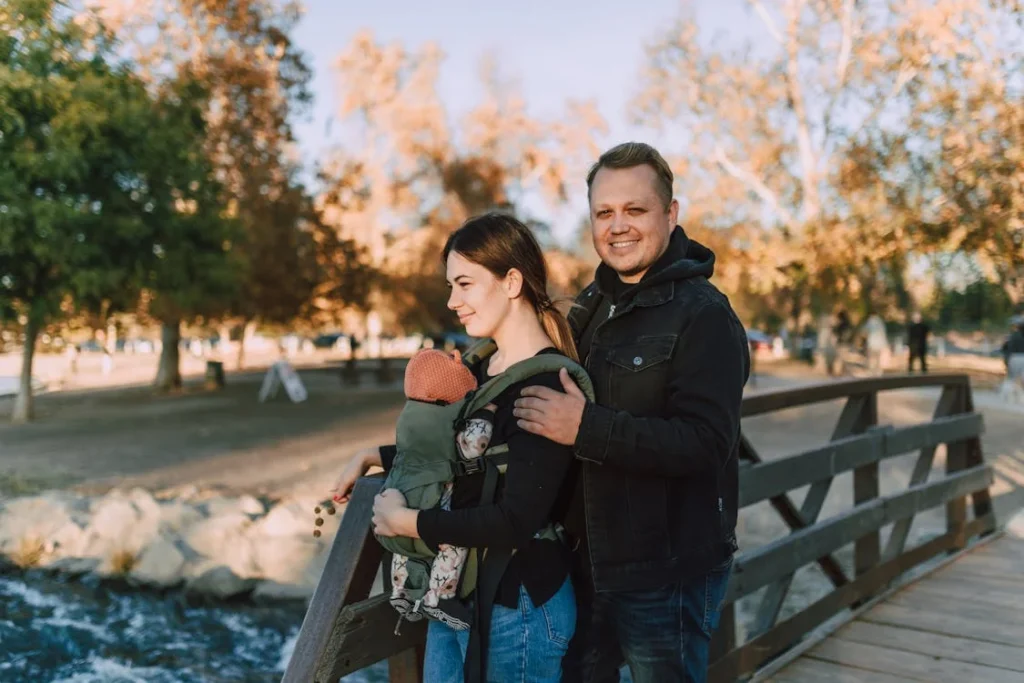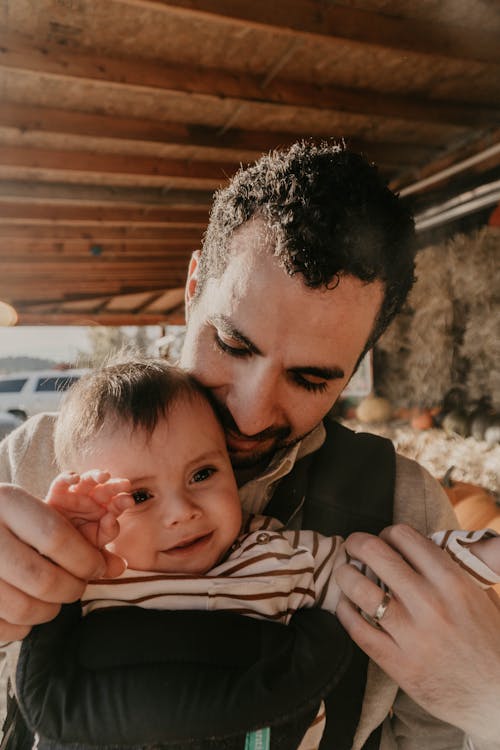Are you on the hunt for the best baby carrier? Let’s talk about it! Your baby was carried in the womb for nine months. While it may have been difficult for the person holding your baby at times, they were most likely content with their cozy surroundings. Because babies know what they like (and let you know loudly), some parents choose to carry their infants from the fourth trimester (newborn days) until the toddler years (and sometimes beyond). While baby wearing may appear trendy, it has been done for thousands of years.
Table of Contents
How We Chose The Best Baby Carriers

Knowing that all carriers are technically safe, the best depends on your lifestyle, budget, body type, and baby.
The following carriers receive high ratings from caregivers we consulted and in reviews for a few reasons and let’s explore them. Features include ease of use, durability, adaptability to various needs, and convenient carrying positions.
Rest assured that medical professionals have also reviewed these carriers. There are no current safety recalls or product integrity issues to be concerned about. The manufacturers of these carriers have tested their products to ensure that they meet industry standards.
However, this list has some limitations because reviews are subjective and may reflect opinions that you do not necessarily agree with. Still, we hope our recommendations will provide a good starting point for finding a suitable carrier for you and your precious cargo!
The Best Baby Carriers

Best no-frills baby carrier
Soft wraps and ring slings may be simpler than other carriers because they require fewer buckles and adjustments. Even though they appear simple, reading and following instructions carefully is critical, as they can be dangerous if misused, particularly for babies under four months.
Boba Wrap
- Weight range: 7–35 lbs (but the company states it works best up to 20 kg)
- Material: 95% French terry cotton and 5% spandex
- Baby position: Front, facing inward
- Price: Under $60
- Pros: The soft, stretchy wrap doesn’t feel like a carrier.
- Cons: It’s not as comfortable with heavier babies.
- Key features: This low-cost wrap is a bestseller and comes in various colors. While this wrap can be used with infants from birth, it is also helpful for toddlers weighing up to 35 pounds. It’s 95% cotton for breathability and 5% spandex for stretch and hold. This wrap is available in a one-size-fits-all style that may be useful for changing postpartum bodies and accommodating other caregivers.
- Considerations: Soft wraps can take some time to master. There are several ways to tie them, but some users may find it frustrating, particularly when out and about. Other parents report that, despite the weight limit, this wrap is uncomfortable for heavier infants and toddlers.
Best baby carrier for toddlers
Toddlers are constantly moving, but they may still enjoy being carried occasionally. Carriers may help protect your back if they have adequate ergonomic support and padding.
Tula Toddler Carrier
- Weight range: 25–60 lbs
- Material: 52% linen, 48% cotton
- Baby position: Front, facing inward; back
- Price: Under $200
- Pros: Quality materials are used. It comes in a variety of styles and carries up to 60 pounds.
- Cons: It cannot be used with tiny babies under 25 lbs.
- Key features: This soft-structured carrier adjusts to fit various body types and sizes. And if it gets dirty, toss it in the washing machine for easy cleaning.
- Considerations: At over $100, this item is a bit of an investment. Some reviewers dislike that your child cannot face out in this career. Others claim insufficient head support for toddlers, which can be uncomfortable if they fall asleep while being carried.
Best baby carrier for dads
Men can use any baby carrier they want if it fits and is comfortable. A few carriers on the market may better accommodate a larger build.
Mission Critical S.01 Action Baby Carrier
- Weight range: 8–35 lbs
- Material: Nylon
- Baby position: Front, facing inward or outward
- Price: Under $200
- Pros: It’s a rugged design made with durable materials.
- Cons: Rough-and-tough fabric may irritate or scratch baby skin.
- The body of this carrier is made of durable and lightweight nylon fabric. It has a rugged military design with webbing (ideal for attaching toys). The liner is removable for easy cleaning.
- Considerations: According to reviewers, this carrier can also accommodate tall dads with larger builds, but sharing with another caregiver of a different size may be challenging. Some argue that this carrier may not be the most comfortable for growing babies. Why? Its seat may not promote the best position because it allows the baby’s feet to dangle rather than spreading wide and lifting the knees into a more health-conscious, ergonomic shape.
Do You Need A Baby Carrier?

In short, no. You do not need to use a baby carrier with your infant. Most items on registries are optional. A baby carrier is in the “could be nice” category. Some parents may do fine without it. However, others cannot imagine living life in any other way. For this reason, you should look into local babywearing groups in your area. The group’s loan program may allow you to try different carriers for free.
There are pros when it comes to using a baby carrier:
- Allows your hands to be free: you can do anything from washing dishes to looking after other children.
- Is an alternative to strollers: If you don’t have much space in your home or car, or if taking a stroller isn’t practical at your destination, having a carrier can be helpful.
- Provides your baby or toddler with a convenient seat: This can be useful if you’re out to eat or somewhere else where you don’t have access to a highchair.
- May help soothe baby: A very dated study from the 1980s found that babies who carry more fuss and cry 43% less than infants who are carried primarily for feeding and crying in the first three months. A baby carrier may make this easier, but it is not necessary.
- Allows for exercise: Knowing your baby is nearby and comfortable, you can walk or do low-impact aerobics.
- Allows you to breastfeed or chest feed while on the go: Some carriers, such as ring slings, are particularly simple to use, but with enough practice, you can nurse using almost any airline.
Baby Carriers, The Best Investment

Baby wearing is here to stay, regardless of the trend. And it’s truly a win-win situation. Your baby receives all of the closeness and cuddles. You have both hands free to complete tasks, exercise, or explore the world. If you want to carry your baby, consider borrowing a friend’s baby carrier for a day or two. You may find the right fit later. Still, you will eventually find one that works for you and your family.


